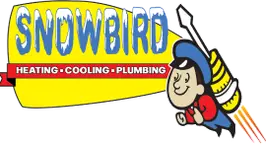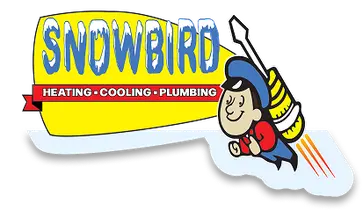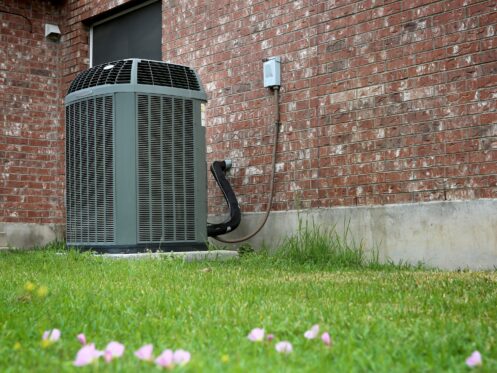Updated September, 2025
Keeping your outdoor AC unit clean is a crucial step for ensuring that your air conditioning works effectively and doesn’t have to use more energy than necessary. The grilles on the sides of an AC often get clogged with all manner of debris.
The fan at the top of the unit continually pulls air in through the sides, which can result in debris getting sucked in and trapped in the grilles. If you don’t take the proper steps to fix this issue, your AC system can quickly start to experience a variety of problems. Read this guide from our cooling services experts to know how to keep your AC clean.
When DIY Cleaning Stops and a Pro Should Step In
Gentle rinsing and debris removal are good homeowner tasks, but certain signs call for a technician. If you see bent fins, a crushed line set, or water leaking back into the home, schedule a professional inspection. A trained tech will test refrigerant pressures, verify electrical components, and clean coils without damaging protective coatings so performance is restored safely.
- Algae or repeated drain clogs can signal a float switch problem that needs attention.
- Persistent hot spots inside often point to airflow restrictions beyond the condenser.
To prevent future issues, consider an annual plan that documents every reading and keeps your system tuned through Florida’s long cooling season. Learn what is included with our Maintenance Agreement, and address airflow problems at the source with a quick check of your home’s HVAC ductwork.
Options for Cleaning Your AC Unit
There are a few ways to clean your AC unit without causing further issues. One is to use a shop vac to suck out any debris stuck in the grilles. You can also gently use a hose and spray the unit down with water.
However, it’s a good idea to shut off the power to the unit first just to be safe. Most newer AC systems have a power disconnect switch on the exterior wall within a few feet of the outdoor unit. If not, you’ll need to switch off the circuit breaker for your HVAC system.
When cleaning your AC unit, make sure to remove any debris that’s piled up next to it and cut back any vegetation that’s growing within 2 feet of it. This also helps to prevent the sides from getting clogged and ensures the unit receives sufficient airflow.
One important thing to note, if you decide to clean the unit with water, is that you never want to use too much pressure. Using a standard spray nozzle is fine, but you definitely shouldn’t try to use a pressure washer due to the risk of damaging the internal components.
Dust and debris also tend to collect inside an AC unit. However, we don’t recommend trying to clean the inside of the unit yourself since you could cause major damage if you’re not careful and don’t know what you’re doing.
The only way to access the inside of the unit is to remove the screws that hold the top grate in place. You then need to remove both the grate and the entire fan assembly, as the fan is directly attached to the grate. That means you also need to disconnect the wiring on the fan.
If you don’t take the appropriate precautions when disconnecting and then reconnecting the wiring, you could easily damage the wiring or otherwise create an electrical issue. The biggest risk is that the wiring could end up short-circuiting and causing a power surge that does severe damage or completely ruins the unit.
In addition to regularly cleaning the outside unit, you also need to make sure to keep all of your vents and registers clean. Dust accumulates on the covers and grilles of vents and registers over time, causing them to get clogged.
By keeping them clean, you can ensure that every room receives sufficient airflow and stays cool. To clean your vents, you just need to remove the cover and vacuum or brush off all of the dust. It’s also a good idea to vacuum the inside of the vents to reduce the chances of them clogging.
Why Cleaning Your AC Unit Is Important
The main reason why it’s necessary to keep an AC unit clean and ensure it has enough clearance around it is so that the fan can pull in enough air. AC systems work by using refrigerant to capture and pull heat out of the house and then release the heat outside.
For the second part of this process to work, the fan needs to continually pull large amounts of air into the unit so that it blows over the condenser coil. The refrigerant is usually around 120-140 degrees Fahrenheit when it starts flowing into the condenser coil, meaning it’s quite a bit hotter than the air blowing across the coil. This temperature difference results in heat naturally getting released into the air and the refrigerant quickly cooling down.
If the sides of the unit are clogged or the airflow is otherwise blocked, a large amount of heat will remain trapped in the refrigerant. The refrigerant won’t cool off to the point it needs to and won’t be able to absorb much heat when it flows through the evaporator coil inside the house. The result is that the rate at which the AC system cools the house is greatly decreased, which forces the system to stay on longer and use substantially more energy.
The air that the fan draws into the unit also helps to cool the compressor down and keep its motor from overheating. The compressor will usually shut down immediately if it overheats, and you’ll have to wait for it to cool down before your AC will come back on.
Even worse, overheating can damage the motor. AC compressors are factory sealed and can’t be repaired if damaged. The only option if the compressor overheats and gets damaged is to pay a high cost to replace it.
Keeping the condenser coil and evaporator coil in your AC system clean is equally important for ensuring efficient and effective cooling performance. Dirty coils can easily lead to an AC system working up to 30% less efficiently. They also put added strain on the system and can lead to it breaking down or having a shorter lifespan.
Reasons to Hire a Professional to Clean Your AC Coils
It’s recommended to clean both coils in an AC system once a year at the very start of the cooling season. While coil cleaning products are readily available online and in many hardware/home improvement stores, trying to clean the coils in your AC system yourself is always a bad idea.
Coil cleaning involves spraying a special cleaning agent onto the coil and then gently brushing it to loosen all of the dust and debris. It’s then necessary to rinse and wipe down the coil to make sure all of the debris gets removed.
One concern when cleaning either coil is that you could bend the aluminum fins. These fins ensure that air gets evenly dispersed across the entire coil. If they get bent, it creates blockages that stop air from reaching part of the coil and prevent the AC system from working as effectively.
An even bigger concern is the risk of damaging the copper lines in the coil and causing refrigerant to continually leak out. If this happens, you’re looking at needing to spend anywhere from $1,000 to $3,000 to have the coil replaced.
One final reason why you’re better off having a professional clean the coils is that they can take care of all of the other necessary maintenance tasks at the same time. They can also inspect everything to make sure the system has no issues.
Annual AC maintenance always pays off. This is because the amount you pay for the service is usually less than you’ll pay in energy costs if you’re AC system isn’t well maintained and doesn’t work efficiently. Maintenance also helps save money by preventing breakdowns and repairs.
Contact Us Today
When you need any HVAC services in Auburndale or Polk County, FL, Snowbird Heating & Cooling is the company to call. We’ve been in business since 1991 and are continually recognized as the area’s top choice for cooling and heating. To schedule a service appointment to clean and maintain your AC, call us today.



